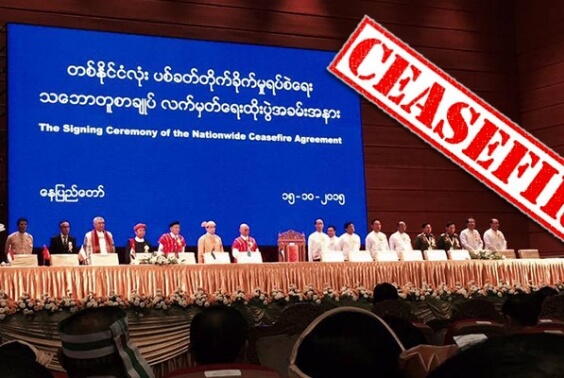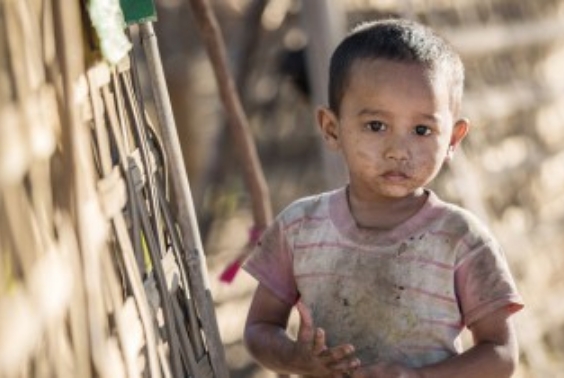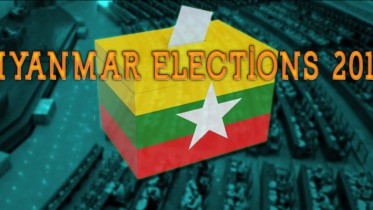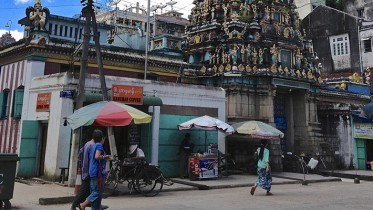- MYANMAR
Living in a Frontier: South Asians and Time and Space of Myanmar
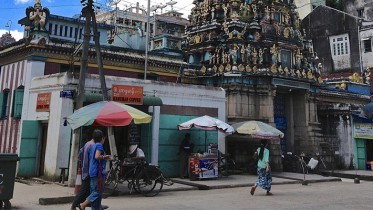
I would like to begin by talking about some recent personal experiences of mine. One was inside Myanmar, and another was outside.
A man I met in Yangon was a third-generation immigrant whose grandfather was a Muslim merchant born in Tamil Nadu, Southern India. After the grandfather’s mystical experiences and conversion to Christianity in his later years, the freedom to choose one’s faith in this family was apparently cultivated by a spirit of forgiveness. Between parents and children, and between siblings, family members followed different religions: Islam, Hinduism, Christianity and Buddhism. And yet they remain close to each other.
Then in Bangkok, Thailand, I visited an assembly hall for Nepalese Theravada Buddhists. The people who gather there all speak Burmese well and many seemed to have a full command of that as well as two other languages: Thai and Nepali. Just at the time of my visit, a group that had come from the town of Lashio in Northeastern Myanmar was soliciting donations to rebuild a Buddhist monastery.
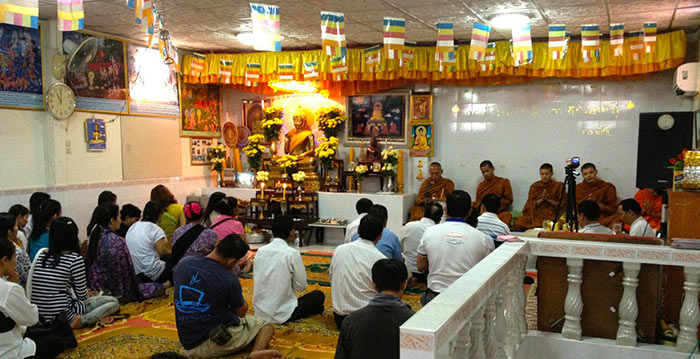
These two experiences are unrelated. However, both involve people in groups originating in the region we now call South Asia, and I believe those people offer suggestions, from different aspects, about their ties to Myanmar and the country’s condition. What then are those suggestions? In this essay I would like to consider these things through the history of South Asians with ties to Myanmar.
Between Southeast Asia and South Asia
Today we refer to Southeast Asia and South Asia. If we use them as expedient categories in the theory of international relations, we can perceive them as amalgamations of multiple nation-states. We speak of Myanmar as an ASEAN (Association of Southeast Asian Nations) member state, located on the western end of Southeast Asia, and so on and so forth. However, just as the ethnic groups and the territory forming the basis of the nation-state are a product of history, these categories are not absolute. If we look at the culture (language, religion, customs, etc.) and ecology (climate, vegetation, geology, etc.), as well as the nature of the historical experiences that have been defined by them, there are discrepancies along with overlaps, malleability and nuances, and there exists a variegated distribution that straddles and spills over national borders. South Asia and Southeast Asia, which are imagined based on this distribution, is a sphere-like world without strictly defined boundaries.
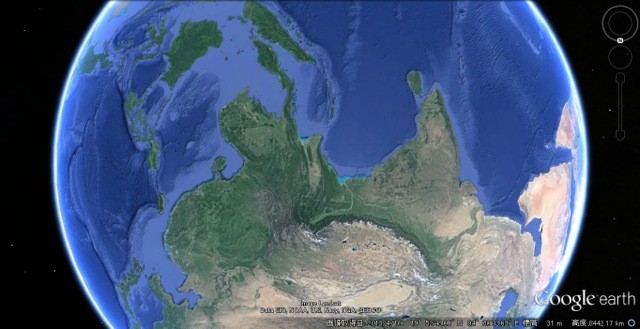
In that sense, Myanmar lies within the frontier between South and Southeast Asia (and hence East Asia). There, those worlds overlap on each periphery, where their attributes gradually fadeaway. The centre of this frontier is the lowlands of the Ayeyarwady River Valley, and a number of mountainous areas branching to the southwest from the Himalayas sweep out as if to encircle it. The Bay of Bengal to the south opens the way to the Indian Ocean and the South China Sea. The Ayeyarwady River Valley has provided a link to the outside world over mountains and seas, uninterrupted from ancient times. (See an article on this site, “Following the Traces of the Kingdom’s Last City: The Street Corners of Mandalay,” by Kazumasa Ishikawa—in Japanese only).
Human traffic has also been active in this process, during which the Burmese-speaking people of the Ayeyarwady River Valley have come to refer to those who visited from the west, primarily from South Asia world, as the “kalar”.
Linkages under Imperialism
Colonization became the decisive event in relations between the Ayeyarwady River Valley and South Asia world. For a half-century beginning in the middle of the eighteenth century, the kingdom of the Konbaung Dynasty that flourished in the central plains of the Ayeyarwady River Valley swept over this frontier. Around the same time to the west, Britain’s East India Company began to establish its influence in the Indian subcontinent from its base in Bengal. These two expansionist forces would come to clash with the dawn of the nineteenth century. Over the course of three wars, the area under the Konbaung Dynasty’s rule was gradually colonized by the close of the nineteenth century. Britain had already established hegemony over the Indian subcontinent and this newly acquired land to the east was organized into the Burma Province, a local administrative body of British India. The territory of this Burma Province would later become that of the present-day state of Myanmar. While being an ambiguous and malleable frontier, a rigid, strictly defined and artificial territory emerged… albeit as a part of India.
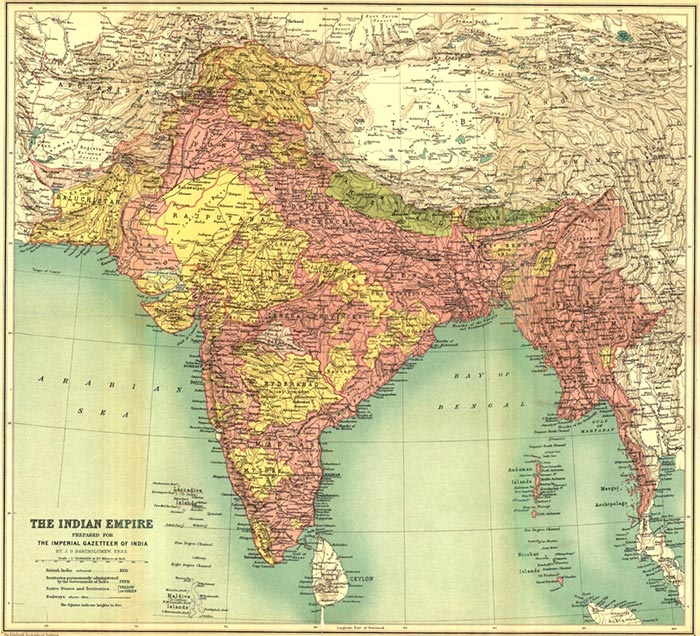
Britain developed the delta area of the lower Ayeyarwady River Valley and transformed it into one of the world’s greatest rice-producing areas. An enormous demand for labour arose in the delta, which had traditionally been sparsely populated. Meanwhile, there was a huge population inflow from the central river valley plains as well as from various regions of the Indian subcontinent’s east. Among the latter were speakers of Bengali as well as of Telugu and Tamil, and they included both Hindus and Muslims. By the beginning of the twentieth century, a society emerged in which a mosaic of various peoples mixed and lived.
Furthermore, the administrative organs and military governing the Burma Province recruited many native-born South Asians as civil servants and soldiers. Famous among them are Ghurkan soldiers from Nepal, who were seen as “a people of a martial spirit”. In addition, the existing trade networks of South Asia took advantage of the expanded territory under British rule to spread into Burma. A group of people from Surat in the subcontinent’s west obtained land in a major city of the Burma Province and succeeded in managing a large market. People from the Chettiar caste of Tamil Nadu developed an independent financial network.
Most of those who came to the Burma Province from South Asia were migrant labourers or people staying for short periods on business. The flow of hundreds of thousands of people a year over the Bay of Bengal reached an enormous scale for its time, nonetheless, from which gradually appeared immigrants who would lay down roots in the land of the the Burma Province. On the basis of this colonial rule was built the unprecedented, and deeply intricate ties between the Ayeyarwady River Valley and South Asia world.
A Foreign Land within India
The Burma Province, however, did not entirely become a part of India. With the advent of the season of politics and nationalism in the twentieth century, the Burma Province would chart a different course from other regions of India.
P. J. Mehta was the leader of the Indian community in the Burma Province at the start of the twentieth century. He was a respected friend of Mahatma Gandhi, the symbol of the Indian independence movement. Influenced by Gandhi, who led a rights movement for Indian immigrants in South Africa, Mehta appealed to the colonial government to improve the treatment of Indian immigrants in the Burma Province. In both South Africa and the Burma Province, two British colonies located on either end of the Indian Ocean with the subcontinent between them, there was a push for the rights of “Indian immigrants”. When the idea of a space called India and the collective of people belonging to it called Indians entered the imagination, the Burma Province, a part of British India, was characterized like South Africa as a place outside of India where Indian immigrants would arrive. (Rather, one could also argue that this awareness of the outside enabled the existence of the internal India. Mehta’s work, however, did not have as strong a unifying force as Gandhi’s.)
The narratives on India were pursuing the dream of rallying together the diverse peoples residing on the subcontinent. In the Burma Province, a separate dream was extolled: Burmese nationalism. This idea tried to connect the framework of the the Burma Province with the traditions of the dynasties that had risen and fallen in the Ayeyarwady River Valley. It was believed that historical consistency was guaranteed by the Burmese language and Theravada Buddhism. In its logic, it was British colonial rule and the Indians who were thought of as invaders that had interrupted this consistency and severed Burma from its history. When seen from this side too, India became external to Burma. The term “kalar”, a term used to lump together the diverse South Asians within the Burma Province, began to connote a hostile, exclusionary nuance. Sporadic riots taking on a Burmese-versus-Indian dimension broke out in the 1930s. (For more on Burmese nationalism and the ideology of the later independent state, see an article this site, “Exclusive nationalism of Burma (Myanmar) represented by its nationality law”, by Kei Nemoto.)
Britain responded to the rising nationalism by gradually conferring autonomy to colonies. Acting in parallel with the expansion of avenues to democratic political participation for natives throughout British India, spatial regional decentralization also proceeded. The result was that autonomy of Burma by the Burmese was established as a goal in Burma Province, and in 1937 it became a separate colony cut off from British India.
The Forgotten Diaspora
During World War II, the Japanese army invaded and Burma became a battlefield. The long-cherished ambition of Burmese nationalism was finally attained after this chaos. In 1948, the independent state of Burma/Myanmar (“Myanmar” will now be used for the name of the country after independence) came into being. Afterward, the state of Myanmar would go on to define itself nominally as a collective entity of indigenous ethnic groups, whereas in fact power was held by a portion of the Burmese. This mismatch between the message and reality led to objections by various groups and gave rise to a long-running civil war. (For more on the post-independence civil war and ethnic issues, see an article on this site, “Karenni and Kayah: The Nature of Burma’s Ethnic Problem over Two Names and the Path to Resolution,” by Tadayuki Kubo.)
In order to cover up the deception and make “indigenousness”—the concept based upon the artificially defined territory of the modern state—the key to unifying the ethnic groups, the government contrarily adopted a policy of emphasizing the negative aspects of “foreign” influences. The junta of General Ne Win, which was established in the 1960s and advocated an independent socialist course, implemented policies to nationalize companies and land. The principal target of these nationalization policies became the “foreign” people who already had roots inside Myanmar and had accumulated assets—in other words, the South Asian peoples and the ethnic Chinese.
As a result of the discriminatory treatment based on the ideology of the independent state of Myanmar and the disorder caused by war with external foes and civil war, many of the South Asian immigrants and their descendants left Myanmar. Those who withdrew to their ethnic groups’ ancestral lands witnessed the sight of the new “homelands” of India and Pakistan (while East Pakistan would become Bangladesh in 1971). Yet, others used the networks they had built during British rule to migrate elsewhere around the world.
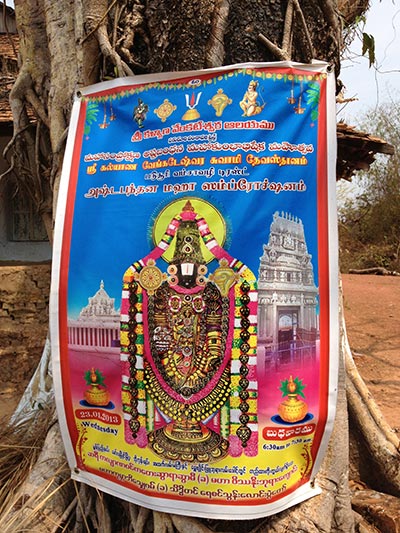
However, there were still more than a few South Asians in Myanmar who stayed behind or had no choice but to remain. In the latter half of the twentieth century Myanmar adopted an isolationist foreign policy, the remaining South Asians’ ties with the subcontinent weakened and their existence became forgotten by South Asian states like India and Bangladesh.
Generally such people tended not to speak South Asian languages even at home as the generations passed, and the proportion who only understand Burmese has risen. In many cases nowadays they appear wearing the longyi (a wraparound skirt) like Burmese men and women. As for religion, while their parents’ faith has been passed on with ease, some have converted to Theravada Buddhism. Furthermore, changing practices have been observed such as praying to Hindu gods alongside Buddhist deities. This is considered an adaptation to a society where Burmese is used as the common tongue and followers of Theravada Buddhism account for the overwhelming majority of citizens.
There are exceptions in certain regions where South Asian languages and customs are in active use without major modifications. They are more entrenched according to the degree that groups share a common place of origin, and culture transmitted by the parents has continued to exist within closed groups. For example, there are settlements of Bihar farmers scattered between Bago and Taungoo, which the colonial government settled in the latter nineteenth century. In addition, multiple Chittagong Muslim farming villages that date back to the first half of the nineteenth century exist on the southeast outskirts of Mawlamyine. Myitkyina in northern Kachin State has concentrations of Nepalese people, including the descendants of Ghurkan soldiers, while near the Bangladeshi border in the northwest of Rakhine there are many settlements where people who call themselves the Rohingya speak a language similar to Bengali.
The South Asian people who have thus remained in Myanmar have come to live their lives in a variety of ways as they have maintained and changed the nature of their identities, lifestyles and religious practices by themselves even under the repressive environment.
Relationships on the Mend
Under the recent reforms of the Thein Sein administration, Myanmar is again opening the door to the international community, the consequences of which are also affecting the South Asian peoples in the region. Lastly I would like to highlight two points about recent trends and state my impressions from the experiences I related in the beginning of this essay.
The first point is the current undercurrent of anti-Islamic attitudes. Many of Myanmar’s Muslims are South Asians. There is an increasing amount of discussion about how Muslims are expanding their influence among the Buddhists who comprise the country’s religious majority, thus fanning a sense of crisis. For example, there has been criticism directed at Muslim men for marrying Buddhist women and converting their wives to Islam. Accompanying this trend have been frequent riots across Myanmar intended to drive out Muslims. Behind the spread of these discussions is the broader freedom of speech brought by the reforms. (See an article on this site, “Recent Religious Riots in Myanmar: the current situation of Burmese Muslims”, by Tin Win Akbar.)
The anti-Islamic talk by some Buddhists depicts the two religions as completely different and irreconcilable faiths competing for control over society. The truth, however, is that Muslims, just like other South Asians, have exhibited diverse, flexible attitudes. For example, there are people who call themselves Bamar Muslims. They follow Islam while possessing a Burmese identity and leading as similar a lifestyle as the majority as they can. The attitude of the third-generation Tamil man I presented in the introduction is another example. The religious tolerance shown by him and his family may certainly be an extreme anomaly, yet from him we can imagine the wide spectrum of forms that faith takes among Myanmar’s Muslims.
The other point is the change in the ways people relate with widespread networks. As I have already stated, some of the South Asians who elected to leave Myanmar withdrew to South Asian countries, while others moved to new lands. One destination for the latter was neighbouring Thailand. This is how the Nepalese followers of Theravada Buddhism in Bangkok, whom I gave as my second experience in the introduction, settled in Thailand. They travelled overland to Thailand, but once they arrived in Bangkok they easily linked up with international networks of Nepalese connected via commercial aviation routes. Direct travel between Nepal and Thailand came to hold more important significance than the difficult travel to and from Myanmar. The frontier that once provided accessible connections between South Asia and Southeast Asia became a void to fly over.
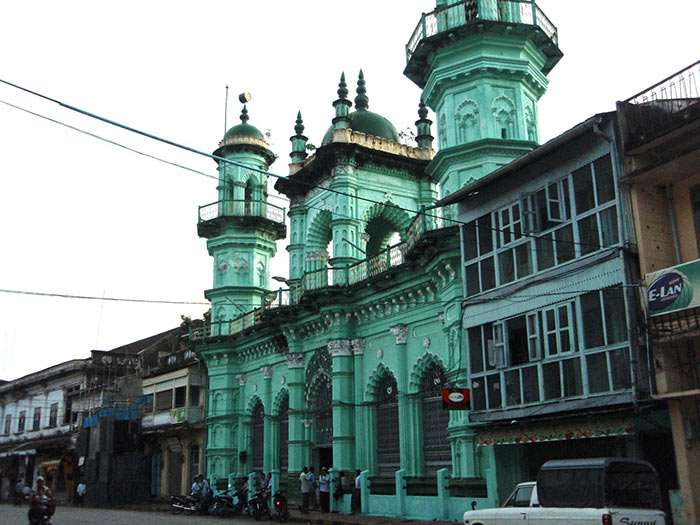
The same applies to some extent to the Bengali Muslim community of Mae Sariang in northern Thailand. The core of this community traces its origins to Muslim merchants who extended overland trade networks during the British India period from Bengal to Chiang Mai via Burma. Here, too, they reorganized these networks after Myanmar’s independence. Although migrants come in from Myanmar, bidirectional ties have faded. According to what people from prominent families in the community say, although currently they are able to contact relatives in Bangladesh, their correspondence with their supposed relatives in Myanmar is cut off.
In response to the reforms of recent years, however, expectations have risen that Myanmar will become an important location for facilitating communication between Southeast Asia and South Asia, and tangible projects such as road construction is commencing. I believe that amidst these changes, Myanmar will reposition itself within wider networks. The visit to the Nepalese Theravada Buddhist assembly hall in Bangkok by the group from Lashio to solicit donations can be seen as a sign of this, can it not?
Now, at this turning point for Myanmar’s state and society, a wide array of new relationships involving South Asians are being remade.
This work is the later English translation of the same article that was published on the site in Japanese 03 June 2014.

Research Associate, Institute of Developing Economies
Note: A part of this article is based on research funded by Japan Society for the Promotion of Science (JSPS) Grant-in-Aid for Scientific Research (B) “Reconsideration of the Historical and Contemporary Land-route Connection between South Asia and South East Asia” (project leader: Takada Mineo, Hiroshima Shudo University).




